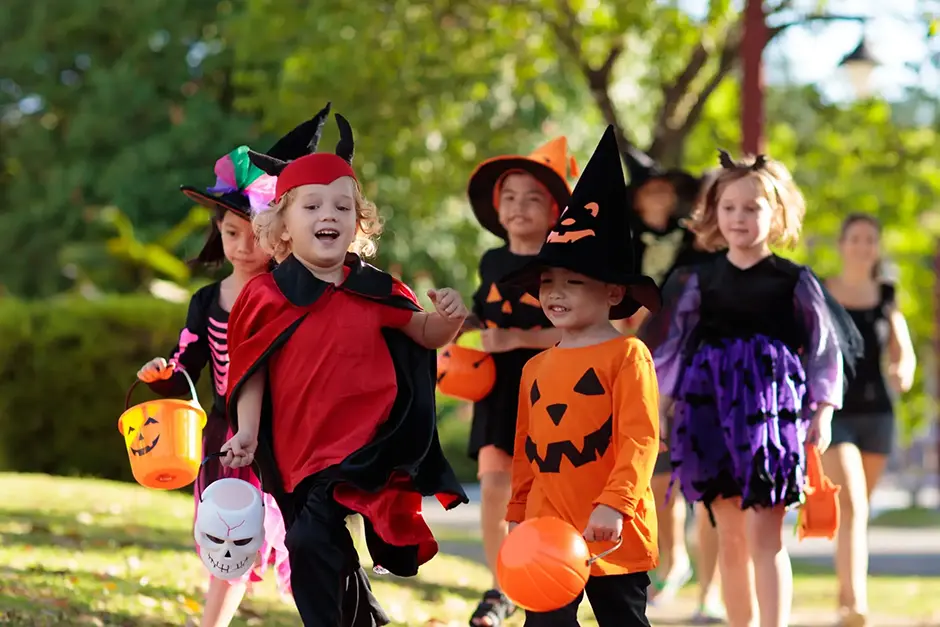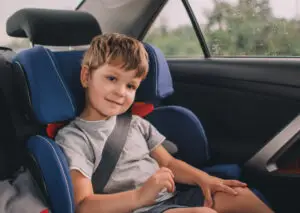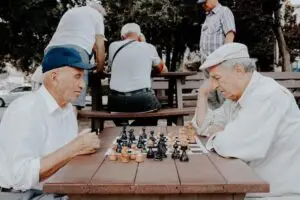Halloween can be an incredibly fun holiday for the entire family to enjoy until someone gets involved in a pedestrian accident. You may already know that pedestrian accidents are more common on Halloween, especially those involving children, but what can you do to keep your children safe? Below, we review some of the most commonly asked questions on keeping children safe on Halloween.
How Can Parents Keep Children Safe From Pedestrian Accidents on Halloween?
Although motorists are responsible for driving lawfully and avoiding dangerous behaviors like speeding or texting and driving, you can take an active role in protecting the safety of your children on Halloween. Here are some of the safety precautions you can take to reduce the risk to your child on Halloween:
- Talk to your child about Halloween safety. The excitement of Halloween can make it easy for children to forget about road safety rules. Remind your child that, even if it may seem like their neighborhood has transformed into a spooky land of fantasy, it is still extremely important to be aware of the roads and any vehicles on them.
- Create a detailed plan and schedule. If your child is old enough to go trick-or-treating alone, they should still follow a planned route and schedule. This will minimize their chances of getting lost or getting into an accident in an unfamiliar neighborhood.
- Organize daytime Halloween activities. Most Halloween pedestrian accidents happen at night when visibility is low and nighttime driving is more dangerous. If possible, you might be able to organize daytime Halloween activities in your neighborhood to celebrate the holiday while the sun is still up.
- Accompany your child. Even if your child is old enough to go trick-or-treating alone, few things can protect their safety, like having direct adult supervision.
- Finish trick-or-treating early. Late-night trick-or-treating can be extra dangerous due to the increased risk of drunk drivers on the streets. As Halloween parties start wrapping up, your children may be exposed to intoxicated drivers the later it gets.
What Can Children Do To Prevent Accidents on Halloween?
Children are more than twice as likely to be hit by a car on Halloween, according to the National Safety Council (NSC). Discussing Halloween’s safety risks with your children is extremely important to ensure that they know how to stay safe. Here are a few things your children can do to prevent accidents on Halloween:
- Go in a group. Going trick-or-treating in a group is fun and a great way to stay safe. While it might be easy for a distracted driver to miss one child, a group of children will be much harder to miss. Make sure all the kids in the group know about the safety risks of Halloween so they can keep each other safe.
- Carry a flashlight. Reduced visibility is one of the biggest causes of pedestrian accidents on Halloween. Carrying a flashlight can help children stay safe in dimly lit areas and avoid pedestrian accidents.
- Stay on the sidewalk. Some neighborhoods may get too crowded with trick-or-treaters, making it tempting to walk on the road instead of the sidewalk. Staying on the sidewalk and designated pedestrian paths is one of the best ways to prevent pedestrian accidents.
- Stay off the phone. If your children are old enough to go trick-or-treating alone, they might also be old enough to have a phone. As tempting as it may be to take videos of everything and text their friends as they trick or treat, make sure your child stays off their phone while walking. This could cause them to walk into the road or miss an oncoming vehicle accidentally.
- Never cut through alleys or backyards. Staying in public and well-lit areas can help keep your children safe. Cutting through alleys or backyards can increase the chances of your child getting lost or into an accident. Some neighborhoods will also have designated trick-or-treating routes, in which case, it is best not to deviate from the official routes.
What Are the Best Halloween Costumes That Can Help Prevent Accidents?
Halloween costumes are a great way for children to unleash their creativity and express their spooky side. However, did you know that your child’s costume also has an impact on their safety? The safest Halloween costumes will include reflective or glow-in-the-dark features and will not restrict their visibility or movement.
Here are some great tips to improve the safety of your child’s Halloween costume:
- Add some reflective tape. Even if your child’s costume is not bright or shiny, you can add some reflective tape as a discreet way to improve their safety. That way, the headlights of oncoming vehicles will reflect off your child, ensuring that the driver can see them ahead of time.
- Remove any obstacles to their vision. Although masks can be fun components of a Halloween costume, many can reduce the child’s field of vision. This can cause your child to miss seeing an oncoming vehicle. If your child insists on wearing a masked costume, try finding a compromise, like making the eye holes bigger or removing the mask only while trick-or-treating.
- Avoid costumes that reduce movement. Having the ability to quickly and easily get off the road is imperative. While it might be tempting to dress up as a giant pumpkin for Halloween, big and clunky costumes may prevent children from reacting quickly enough to oncoming danger.
When Is It Safe for Children To Go Trick-or-Treating Alone on Halloween?
There is no legal limit on when your child can go trick-or-treating independently. However, a good rule of thumb is to not let your child go out alone until they are 12 years or older. If they are old enough to go trick-or-treating without adult supervision, you should encourage them to go out with a group of friends, preferably older ones, to keep them safe.
You should also consider other factors that may impact the age your child is old enough to go trick-or-treating alone safely. For example, if you live in a gated community or a small and intimate neighborhood, you may feel comfortable letting them trick-or-treat on their own before age 12. On the other hand, you may want to wait a little longer if you live near busy avenues or intersections.
SOURCES:
- https://www.nsc.org/community-safety/safety-topics/seasonal-safety/autumn-safety/halloween





